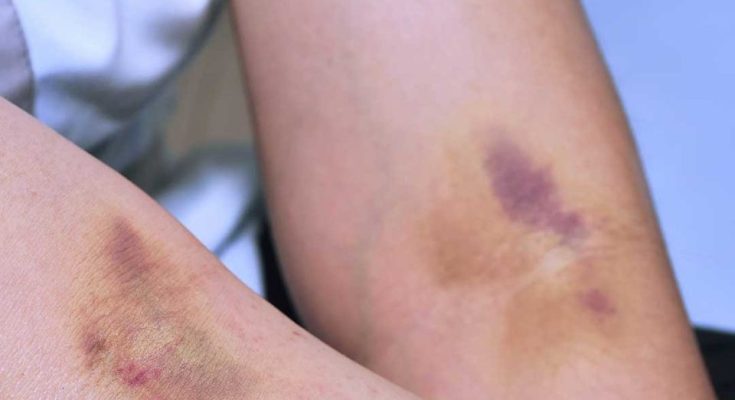Bruising is a common occurrence that most people experience at some point in their lives. It happens when small blood vessels near the skin’s surface break due to an impact or injury, causing blood to leak into the surrounding tissues. While occasional bruising is normal, some individuals find themselves bruising more easily than others, which can be a cause for concern.
Easy bruising can be a sign of various underlying issues, ranging from minor to serious. Understanding the reasons behind this phenomenon is crucial for determining whether it is a benign condition or a symptom of something more significant. This article explores the potential causes of easy bruising and what it might signal about your health.
1. Understanding Bruising: What is Normal?
Bruising, medically known as contusions, occurs when blood vessels are damaged and blood leaks into the surrounding tissue. A normal bruise typically starts as a reddish mark, turning blue or purple within a few hours, and eventually fading to yellow or green as it heals over a period of two to three weeks.
Most bruises are harmless and heal on their own without medical intervention. However, the size and frequency of bruises can vary greatly among individuals. Factors such as skin thickness, age, and the location of the bruise can affect how quickly and visibly a bruise appears. For instance, bruises on the arms and legs may be more noticeable and take longer to heal than those on other parts of the body.
2. Common Causes of Easy Bruising
Several factors can contribute to easy bruising. One of the most common causes is the fragility of blood vessels, which can be hereditary or develop over time. People with fair skin may also notice bruises more easily than those with darker skin tones.
Other common causes include minor injuries that go unnoticed, such as bumping into furniture or engaging in physical activities. Certain medical conditions, such as liver disease or blood disorders, can also increase the likelihood of bruising. Additionally, lifestyle factors like alcohol consumption and smoking can weaken blood vessels, making them more prone to damage.
3. Vitamin Deficiencies and Their Impact
Vitamin deficiencies, particularly of vitamin C and vitamin K, can significantly impact the body’s ability to heal and maintain healthy blood vessels. Vitamin C is essential for collagen production, which helps strengthen blood vessel walls. A deficiency can lead to weakened vessels and increased bruising.
Vitamin K plays a crucial role in blood clotting. Without adequate vitamin K, the body may struggle to stop bleeding, leading to more pronounced and frequent bruising. Ensuring a balanced diet rich in these vitamins can help reduce the risk of easy bruising.
4. The Role of Aging in Bruising
As we age, our skin becomes thinner and loses some of its protective fatty layer, making blood vessels more susceptible to injury. This natural aging process can lead to increased bruising, even from minor bumps or falls.
Additionally, the production of collagen decreases with age, further weakening the structural integrity of blood vessels. Older adults may notice that bruises take longer to heal, as the body’s regenerative processes slow down over time.
5. Medications That May Increase Bruising
Certain medications can increase the likelihood of bruising by affecting blood clotting or weakening blood vessels. Common culprits include blood thinners like aspirin and warfarin, which are prescribed to prevent blood clots but can also lead to easier bruising.
Other medications, such as corticosteroids and nonsteroidal anti-inflammatory drugs (NSAIDs), can also contribute to bruising by affecting the skin and blood vessels. If you notice increased bruising after starting a new medication, it is important to discuss this with your healthcare provider.
6. When to Worry: Signs of Underlying Conditions
While occasional bruising is usually harmless, certain signs may indicate an underlying medical condition. If you notice large, painful bruises that appear without any known cause, or if bruises are accompanied by other symptoms like bleeding gums or frequent nosebleeds, it may be time to seek medical advice.
Conditions such as hemophilia, leukemia, or other blood disorders can cause excessive bruising and require prompt medical attention. A healthcare professional can conduct tests to determine the cause and recommend appropriate treatment.
7. Viral Hacks for Reducing Bruising
There are several popular home remedies and viral hacks that claim to reduce the appearance and duration of bruises. Applying ice packs immediately after an injury can help constrict blood vessels and reduce swelling, potentially minimizing the size of a bruise.
Other remedies include using arnica gel, which is believed to have anti-inflammatory properties, and applying a warm compress after the initial swelling has gone down to promote circulation and healing. While these methods may provide some relief, their effectiveness can vary from person to person.
8. Dietary Changes to Strengthen Blood Vessels
Incorporating certain foods into your diet can help strengthen blood vessels and reduce the risk of bruising. Foods rich in vitamin C, such as citrus fruits, strawberries, and bell peppers, support collagen production and vascular health.
Leafy greens like spinach and kale are excellent sources of vitamin K, which is essential for proper blood clotting. Additionally, foods high in bioflavonoids, such as berries and onions, can help improve capillary strength and reduce bruising.
9. The Connection Between Bruising and Blood Disorders
Blood disorders, such as hemophilia and von Willebrand disease, can significantly increase the risk of bruising due to impaired clotting mechanisms. These genetic conditions affect the body’s ability to produce certain proteins necessary for blood coagulation.
Leukemia, a type of cancer affecting blood and bone marrow, can also lead to easy bruising. It disrupts the production of healthy blood cells, resulting in a decreased platelet count and increased bleeding risk. Early diagnosis and treatment are crucial for managing these conditions.
10. Lifestyle Factors That Contribute to Bruising
Certain lifestyle choices can contribute to easy bruising. Smoking, for example, damages blood vessels and reduces the skin’s ability to heal, leading to more frequent and severe bruising.
Excessive alcohol consumption can also impair liver function, affecting the production of clotting factors and increasing the risk of bruising. Maintaining a healthy lifestyle, including regular exercise and a balanced diet, can help reduce the likelihood of bruising and promote overall vascular health.
11. When to Seek Medical Advice
If you experience frequent or unexplained bruising, it is important to consult a healthcare professional to rule out any serious underlying conditions. A doctor can perform a physical examination and order blood tests to assess clotting function and platelet levels.
Seek immediate medical attention if you notice signs of severe bleeding, such as blood in urine or stools, or if bruising is accompanied by other concerning symptoms like fatigue or unexplained weight loss. Early intervention can help address potential health issues and prevent complications.



